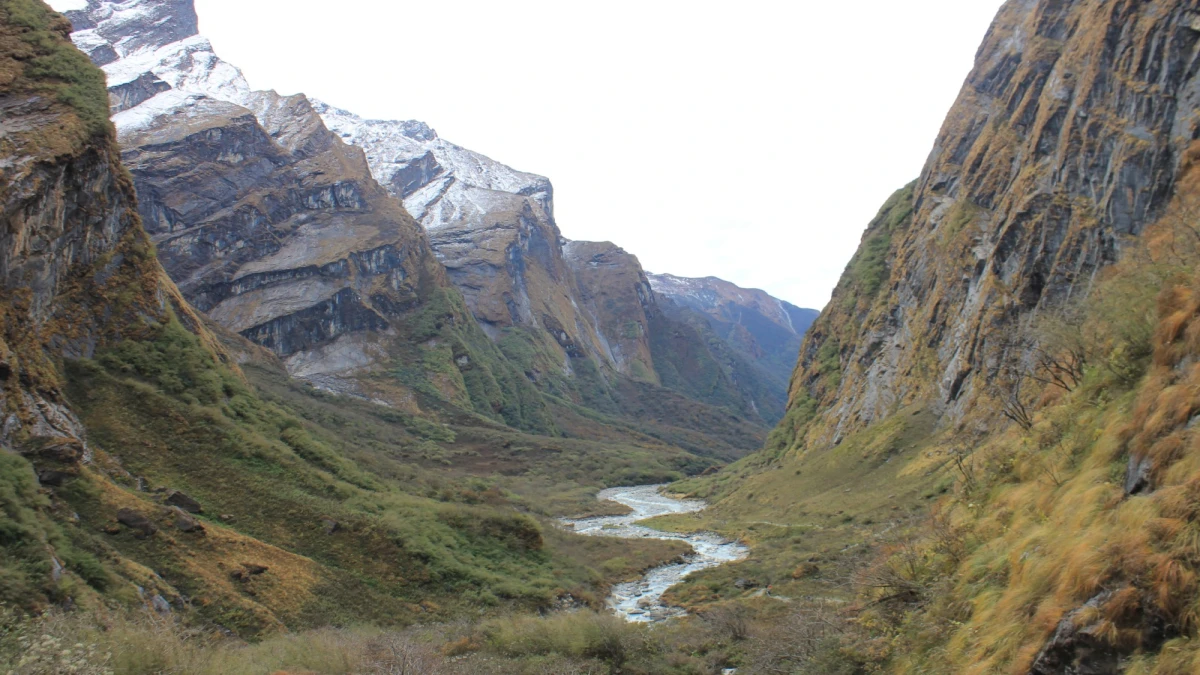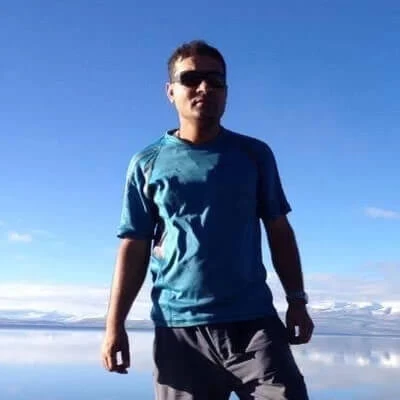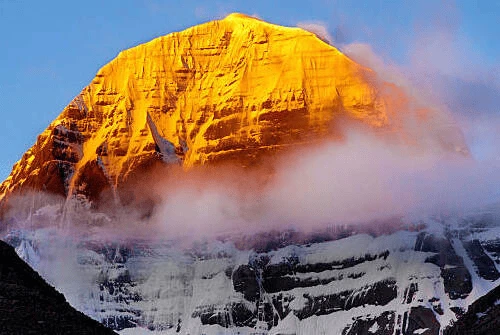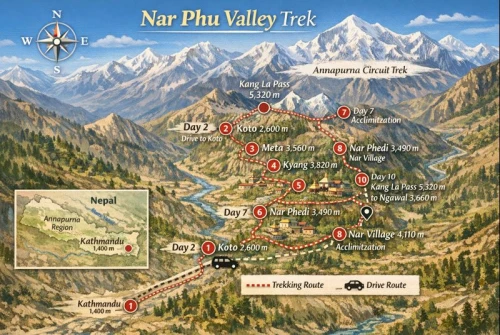Trekking in Nepal is an unparalleled adventure, offering trekkers the opportunity to explore some of the world's most stunning landscapes, remote villages, and vibrant cultures. Whether you're trekking in the Everest, Annapurna, or Langtang regions, it's crucial to understand what to expect regarding accommodation, meals, health safety, equipment, and other logistics. This detailed guide will help you prepare for your journey and ensure that you're ready for an unforgettable trekking experience in the Himalayas.
Ultimate Guide to Trekking in Nepal: Tips for Everest, Annapurna & Langtang
Accommodation during Trekking
During treks in the Everest, Annapurna, and Langtang regions, the most common form of accommodation is provided in tea houses (local lodges). These tea houses offer basic facilities, providing a place to rest, eat, and interact with other trekkers.
1. Tea House Lodges:
Room Layout: Rooms in tea houses are very basic, generally furnished with twin beds, a small table, and minimal furniture. Bedding (such as blankets) is usually provided, but it can get cold at higher altitudes, so it’s recommended to bring a sleeping bag.
Toilets and Bathrooms: Bathrooms in tea houses are usually shared. They can either be squat-style toilets or Western-style toilets. Toilets are generally located outside the lodge, though some of the more modern tea houses at lower altitudes have attached bathrooms. Hot water for showers is sometimes available but usually at an additional charge. It’s also important to note that, at higher altitudes, the availability of hot water can be limited.
Water and Hygiene: Many tea houses have running water, but it may not always be hot. For hygiene, especially in higher regions, you might want to bring wet wipes or hand sanitizers, as the facilities can be basic.
Tip: To avoid disappointment, always ask your guide about the availability of hot showers and bathroom conditions at each stop.
Meals During Trekking
One of the joys of trekking in Nepal is the food, which provides both comfort and energy to trekkers. Meals in tea houses consist of traditional Nepali food along with some Western options, especially in more frequented trekking areas like Everest and Annapurna.
1. Traditional Nepali Meals:
Dal Bhat: The most common meal served in the tea houses is Dal Bhat, a combination of lentils (dal) and rice (bhat). This meal is very nutritious and offers long-lasting energy for trekkers. It’s often served with a variety of vegetables, chutneys, and pickles.
Other Nepali Dishes: You will also find a variety of other meals, such as momo (dumplings), noodles, soup, vegetable curry, and potato-based dishes.
2. Western Food:
While traditional Nepali food is a staple, many tea houses also offer Western food, such as:
Pizza
Pasta
French fries
Sandwiches
Soft drinks, snacks, and beer are available at most tea houses, although the cost may increase as you ascend higher into the mountains.
3. Lunch on the Trail:
Lunch is typically eaten at one of the trailside restaurants (local eateries) located along the trekking route. Depending on the season and availability, these restaurants offer a limited selection of food, primarily local dishes.
Tip: Stick to cooked food and avoid consuming raw salads or unpeeled fruits to reduce the risk of stomach issues, especially at higher altitudes.
Safe Drinking Water on the Trek
Ensuring you have access to safe drinking water is crucial for maintaining good health during your trek. Here are your options for hydration:
1. Boiled Filter Water:
Most tea houses offer boiled filtered water at a nominal charge. You can also ask the lodge owner for water, but it might cost you slightly more. This is the safest option along the trekking route.
2. Chlorine Tablets:
You can bring chlorine tablets or any water purification tablets with you to purify water from guesthouses and streams along the route. These are an effective and inexpensive option.
3. Mineral Water:
Mineral water is available at most tea houses, although it comes with an environmental concern. Plastic waste is a growing problem, and there is no infrastructure to properly dispose of plastic bottles in remote areas. Therefore, it's best to refill your water bottle at tea houses where possible.
Tip: Carry a reusable water bottle (minimum 1 liter) and refill it regularly to stay hydrated.
Trekking Team (Guide and Porter)
When trekking in the Everest, Annapurna, or Langtang regions, it’s highly recommended to hire a local guide and porter to help you navigate the trail safely and carry your luggage. Here's how they can assist:
1. Trekking Guide:
Responsibilities: Your guide will ensure your safety and assist with logistics throughout the trek. They are knowledgeable about the trails, local culture, and emergency procedures. Guides are also trained in high-altitude medicine and first aid.
Language: While most guides can communicate in English, their proficiency may be limited to trekking-specific terms.
2. Porter:
Role: Porters carry your luggage, which typically weighs between 20-25 kg per person. It’s customary to have one porter for every two trekkers. Porters are local citizens and are accustomed to the challenging conditions of high-altitude trekking.
Tip: Be mindful of your porter's workload and ensure they are not carrying too much. A well-balanced load makes the trek easier and safer for them.
Trekking Equipment Checklist
Bringing the right gear for your trek is essential. Here’s a detailed checklist to ensure you have everything you need:
1. Clothing:
Base Layer: Moisture-wicking t-shirts and thermals.
Mid Layer: Fleece or wool layers for warmth.
Outer Layer: Windproof and waterproof jacket, pants, and shell layer.
Additional Clothing: A warm fleece jacket, comfortable trekking shoes, wool socks, a hat, gloves, scarf, and extra clothing for evenings.
2. Footwear:
Trekking Boots: Well-fitted and sturdy boots for the rugged terrain.
Camp Shoes: Lightweight running shoes or sandals for evening relaxation.
3. Essential Gear:
Day Pack: A small bag to carry your essentials during the day (water, snacks, camera).
Sleeping Bag: A good-quality, 4-season sleeping bag is recommended for colder nights.
Headlamp/Flashlight: Preferably a headlamp for hands-free lighting.
Sunscreen & Lip Balm: High SPF sunscreen for sun protection at high altitudes.
4. Health & First-Aid:
First Aid Kit: Include essentials like band-aids, painkillers, anti-diarrheal medication, anti-histamines, and any prescription medication you may need.
Hand Sanitizer: Essential for maintaining hygiene during the trek.
5. Miscellaneous:
Camera/Binoculars: To capture the breathtaking views.
Snacks: Energy bars, nuts, chocolates, and dried fruits.
Travel Documents: Passport, visa, and travel insurance details.
Weather and Climate
Nepal's diverse weather and climate conditions can impact your trekking experience. Here's an overview:
1. Autumn (Mid-September to November):
Conditions: Clear skies, warm days, and cold nights. It’s the most popular trekking season due to the stunning mountain views.
Altitude Effects: Nights can be freezing at higher altitudes.
2. Winter (December to February):
Conditions: Cold days with the possibility of snow at high altitudes. Fewer trekkers venture out during this time.
Altitude Effects: High-altitude treks can be more challenging due to snow and sub-zero temperatures.
3. Spring (March to May):
Conditions: Clear mornings, afternoon clouds, and occasional rain. Beautiful wildflowers like rhododendrons bloom during this period.
Altitude Effects: The weather is mild and ideal for trekking in lower altitudes.
4. Monsoon (June to September):
Conditions: Heavy rain, humidity, and muddy trails make trekking difficult.
Altitude Effects: Some areas, such as Mustang and Dolpo, lie in the rain shadow and experience less rain, making them suitable for trekking.
Tip: Autumn and Spring are the best seasons for trekking due to clear weather and ideal trekking conditions.
Health & Safety: Altitude Sickness
Altitude sickness (also known as acute mountain sickness or AMS) can occur at altitudes over 3000 meters. The symptoms range from mild (headaches, nausea) to severe (dizziness, fatigue, loss of appetite).
Preventing AMS:
Ascend Slowly: Allow for proper acclimatization by taking rest days at intermediate altitudes.
Stay Hydrated: Drink 3-4 liters of water per day.
Pacing: Avoid overexertion and take breaks frequently.
Tip: If you feel the symptoms of altitude sickness, inform your guide immediately. They will help assess your condition and advise the appropriate actions, which may include descending to a lower altitude or resting for the day.
Trekking Days and Walking Hours
During the trekking days in the Everest, Annapurna, or Langtang regions, expect to walk 6 to 8 hours per day. The actual hours of walking will depend on the trail’s difficulty, your pace, and the altitude of your destination.
Lunch Breaks: You’ll usually take a lunch break at one of the trailside restaurants. These breaks typically last about an hour.
Trekking Speed: It's important to maintain a steady pace and avoid rushing. Trekking at a comfortable pace will help with acclimatization and reduce the risk of altitude sickness.
Altitude Considerations: The maximum altitude you’ll reach during the trek depends on your route. For example, the Everest Base Camp trek reaches up to 5,364 meters (17,598 feet), while the Annapurna Circuit crosses the Thorong La Pass at 5,416 meters (17,769 feet).
Travel Insurance
It is mandatory to have comprehensive travel insurance to trek in Nepal. When purchasing insurance, make sure it covers:
Emergency evacuation (heli-rescue, if necessary)
Medical expenses, including treatment for altitude sickness
Trip cancellation, especially if you need to cut your trek short for unforeseen reasons
Loss of baggage, personal items, or theft
Personal liability and delays due to weather or other issues
Tip: Always carry a hard copy of your insurance policy and emergency contact numbers during your trek. Ensure your insurance covers activities at high altitudes (up to 6,000 meters or higher, depending on your trek).
Health and Vaccinations
To trek safely in Nepal, it is recommended to be in good physical condition and follow these health precautions:
1. Vaccinations:
While no specific vaccinations are mandatory for trekking in Nepal, common recommendations include:
Hepatitis A and B
Typhoid
Tetanus
Rabies (if you're spending significant time in rural areas)
Yellow Fever (if traveling from an infected area)
Consult with your doctor for the most up-to-date vaccinations and advice, and make sure to carry enough personal medications for the duration of your trek.
2. Physical Fitness:
You don’t need to be an athlete to trek in Nepal, but having a reasonable level of fitness will help you immensely. Engage in activities such as running, swimming, hiking, or cardio training a few weeks before the trek.
3. First-Aid Kit:
It’s wise to carry a basic first-aid kit, including items such as:
Pain relievers (e.g., aspirin, ibuprofen)
Anti-diarrheal medication
Band-aids and gauze
Anti-histamines for allergies
Altitude sickness medication, such as Diamox (consult with your doctor before taking)
Also, carry hand sanitizers, antibacterial wipes, and any prescription medications you may need.
Visa Requirements and Entry to Nepal
All foreign nationals (except Indian citizens) need a visa to enter Nepal. You can easily obtain a Nepalese visa in two ways:
Before arrival: From a Nepalese embassy or consulate in your home country.
On arrival: At Tribhuvan International Airport in Kathmandu.
Visa Fees:
15 days: USD 25
30 days: USD 40
90 days: USD 100
Make sure to bring your valid passport (with at least 6 months’ validity), two passport-size photos, and the visa fee in USD or equivalent.
Accommodation in Kathmandu and Pokhara
While trekking is your main adventure, you’ll likely spend a few days in Kathmandu (for preparation) and Pokhara (for Annapurna trekkers) before and after your trek. Here are some details about accommodations in these cities:
1. Kathmandu:
Most trekkers stay at three-star hotels in the heart of Kathmandu, such as in the Thamel area. These hotels offer a mix of modern amenities, including hot water, Wi-Fi, and restaurant facilities. They typically offer twin-sharing rooms with breakfast included.
2. Pokhara:
For Annapurna trekkers, Pokhara serves as a base for trekking. Similar to Kathmandu, three-star hotels in Lakeside offer comfortable accommodations. You can enjoy stunning views of the Himalayas from many of these hotels. Pokhara has more lakeside cafes and opportunities for sightseeing and relaxation.
Recharging Electronic Devices on the Trek
While trekking in the Himalayas, you’ll need to keep your electronics charged, whether it's for navigation, photography, or communication.
1. Charging Facilities:
Most tea houses have electricity, but charging your devices might incur a small fee. Charging can be done via solar panels, battery packs, or electric generators, especially at higher altitudes.
Voltage: Nepal uses 220V to 240V, 50 Hz power. You’ll need a plug adapter to fit Nepali outlets.
Tip: Carry a portable power bank as a backup to charge your devices during the day.
Risk & Liabilities
Despite the well-established infrastructure for trekking, there are certain risks and liabilities associated with trekking in Nepal, including:
Natural disasters: Landslides, floods, and earthquakes may occasionally disrupt trekking routes.
Health issues: Altitude sickness, accidents, or injuries might require emergency medical assistance or evacuation.
Political instability: Occasionally, strikes or civil unrest may affect travel schedules.
Responsibility:
While All Nepal Hiking Pvt. Ltd. takes all precautions to ensure a safe and enjoyable trek, the company is not responsible for any unforeseen changes due to natural calamities, political unrest, or personal health issues. All costs arising from emergencies or unexpected events must be borne by the trekkers.
Conclusion
Trekking in Nepal’s Everest, Annapurna, and Langtang regions is a once-in-a-lifetime adventure, offering breathtaking views, cultural encounters, and physical challenges. By understanding the basics of accommodation, meals, safety, and the logistics of trekking in these areas, you will be well-prepared for the adventure ahead.
Plan your gear, health precautions, and trekking team carefully, and remember to embrace the journey as much as the destination. Whether it’s the majestic peaks of the Himalayas or the serenity of the tea houses, every step you take in Nepal’s mountains will become a cherished memory.




